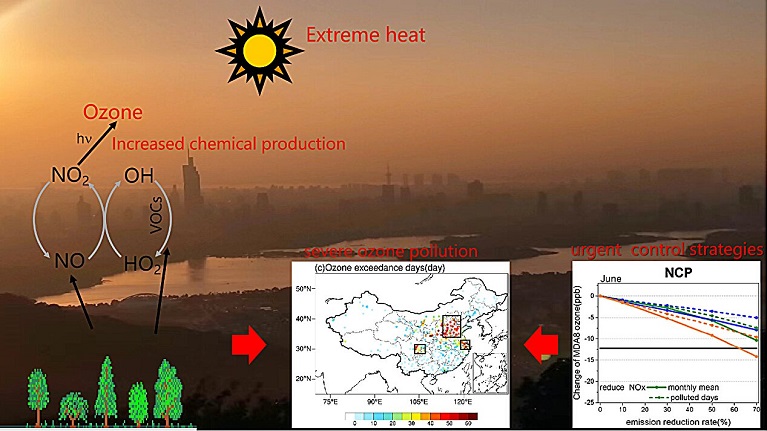Extreme heat and ozone pollution: Chinese scientists call for targeted control strategies
Elevated surface ozone concentrations in China are posing a significant threat to both human health and crop yields. Extreme heat can greatly exacerbate ozone pollution through both complex chemical and physical processes. For example, extreme heat is often accompanied by stagnant weather conditions, which can lead to the accumulation and subsequent elevation of ozone.
Considering that extreme heat events have been becoming increasingly frequent in recent decades and are also expected to do so in the future, effective control strategies to reduce ozone pollution risks are urgently needed.
Therefore, a research group led by Prof. Ke Li from Nanjing University of Information Science and Technology examined the driving factors of urban ozone pollution in China during the extremely hot summer of 2022 and the impact of emission control strategies using surface measurements and the chemical transport model GEOS-Chem.
Their findings have been published recently in Atmospheric and Oceanic Science Letters.
According to this study, the North China Plain region experienced monthly ozone anomalies exceeding 12 ppbv in June 2022 relative to 2021, while the Yangtze River Delta and the Sichuan Basin faced similar challenges in July and August.
“Despite the governmental report showing a reduction in NOx (nitrogen oxides) and VOC (volatile organic compounds) emissions between 2021 and 2022, our model simulations revealed that the significant increase in chemical production was the primary driver of this widespread ozone surge,” says Prof. Li.
In addition, a series of scenario simulations were conducted to assess the impact of reducing NOx and VOC emissions individually and collectively on ozone levels.
“We found that both NOx and VOC emission reductions had an equal influence on ozone concentrations in the North China Plain region in June, while NOx emission reductions were more crucial than VOC reductions in mitigating ozone levels in the Yangtze River Delta and Sichuan basin regions during July and August,” explains Prof. Li.
“Our findings provide critical insights into the development of targeted ozone control strategies that should be tailored to the unique challenges posed by extreme heat in China. By understanding the dominant factors driving ozone pollution during these events and quantifying the impact of precursor emission reductions, we can develop more effective and targeted measures to protect public health and improve air quality next time when we see a similar event again,” adds Prof. Li.
Source: Chinese Academy of Sciences, March 27, 2024. https://phys.org/news/2024-03-extreme-ozone-pollution-strategies-china.html
More information: Wenhao Qiao et al, Implications of the extremely hot summer of 2022 on urban ozone control in China, Atmospheric and Oceanic Science Letters (2024). DOI: 10.1016/j.aosl.2024.100470
